On 4 May 1978, Altab Ali (24 Oct 1953 – 4 May 1978), a Bangladesh-born textile worker in an area off Brick Lane, was stabbed to death in London, in a racially motivated attack.
Roy Arnold, Carl Ludlow (both 17) and another boy (16) did not know Mr Ali and did not care who he was. “No reason at all,” said the 16-year-old, when a police officer asked why he attacked Mr Ali. “If we saw a Paki we used to have a go at them,” he remarked. “We would ask for money and beat them up. I’ve beaten up Pakis on at least five occasions.”
Paul Trevor’ photographs mark how East London’s Bengali activists fought for survival and the right to live with security and dignity.
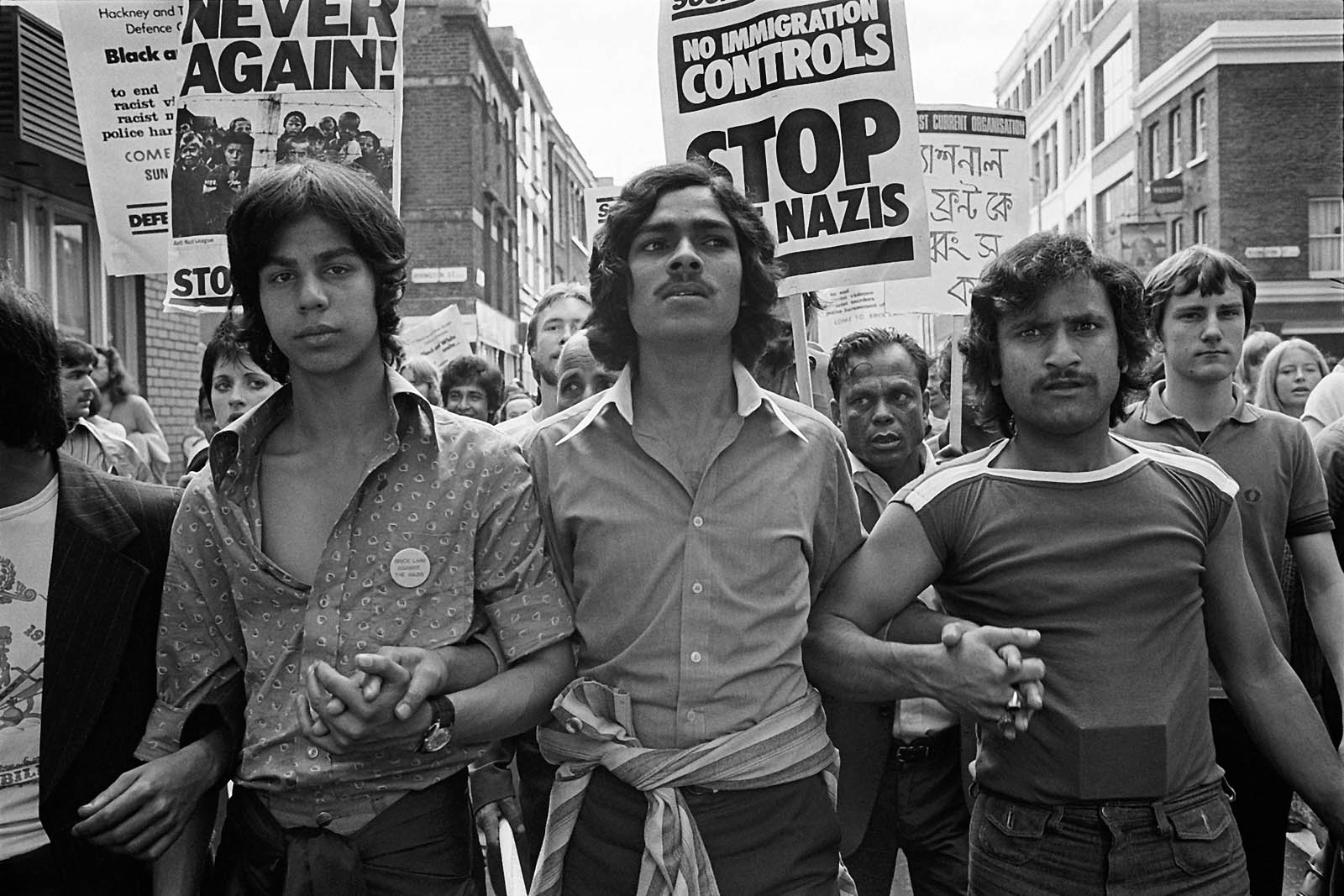
On the day when local elections were being held, Ali was stabbed in Adler Street by three teenagers. Paul’s pictures document how members of the Bengali community mobilised against racist violence and institutional police racism. They held mass demonstrations. Their actions were a turning point in resistance against racism and discrimination in Britain.
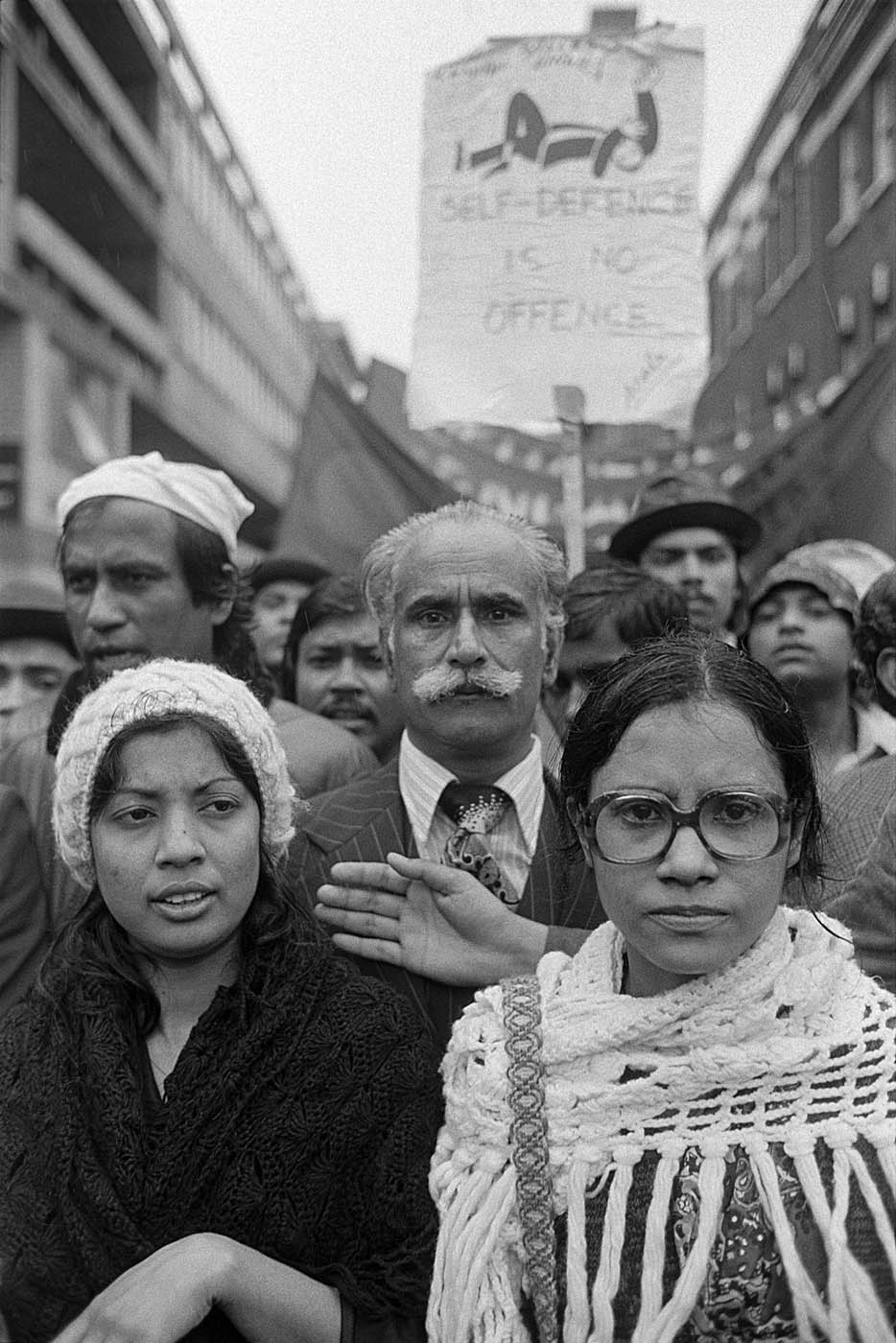
In the 1970s, racism was rife in Britain. On the 13th August 1977, the Battle of Lewisham in south London had seen “500 members of the far-right National Front (NF) attempted to march from New Cross to Lewisham in southeast London and various counter-demonstrations by approximately 4,000 people led to violent clashes between the two groups and between the anti-NF demonstrators and police.”
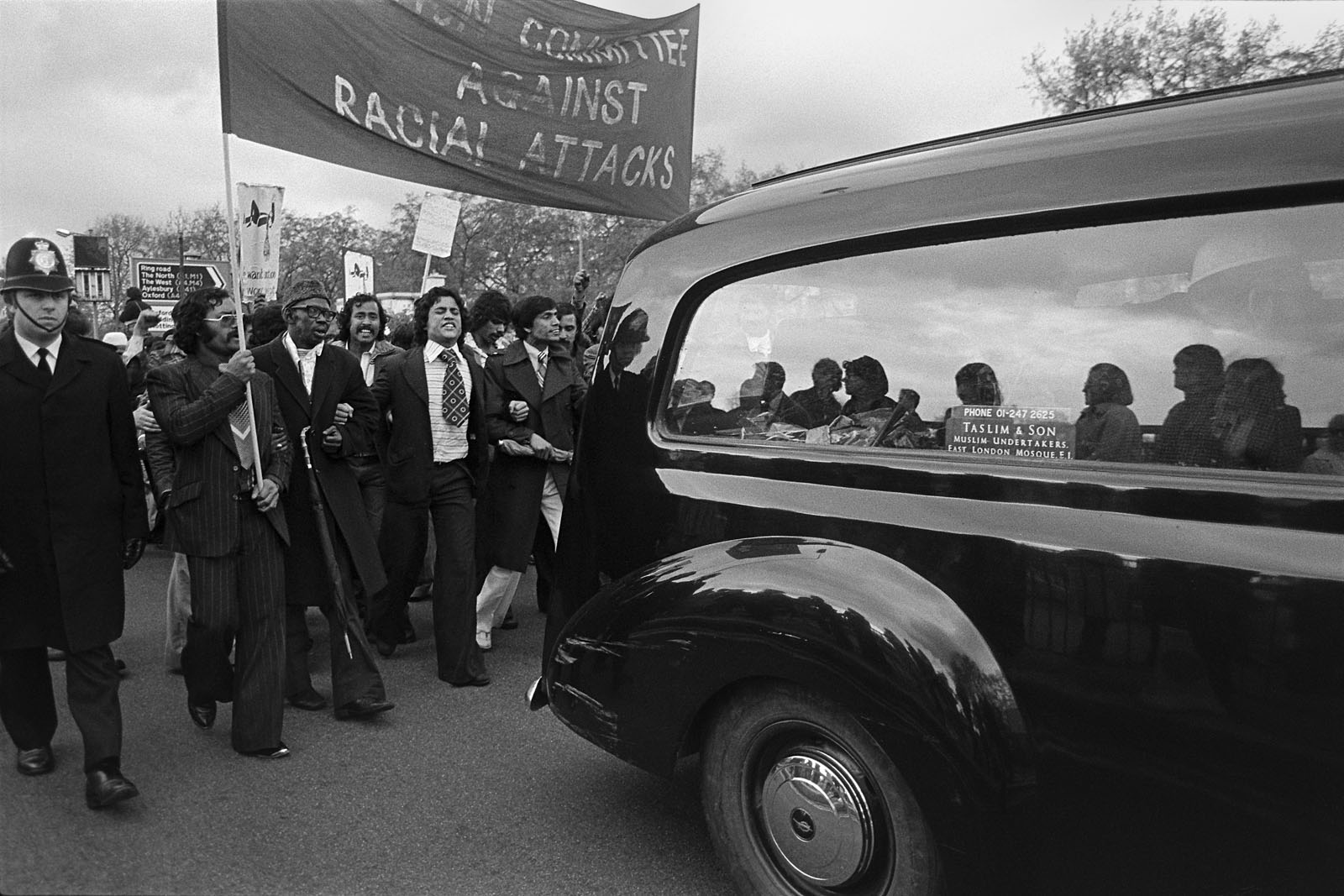
On 14 May 1978, the protestors marched behind Altab Ali’s coffin from Whitechapel near the site of his death to Hyde Park, organised by the Action Committee Against Racial Attack (ACARA).
At the forefront of the campaign was ACARAA general secretary Jamal Hasan. He says on the website of the foundation set up to remember Altab Ali:
Unlike the ‘Battle of Cable Street’ which was fought and won on the same day (4th October 1936), the ‘Battle of Brick Lane’ lasted nearly a decade. It came to a climax on 4th May 1978 when Altab Ali, a young Bangladeshi, was brutally murdered by racist thugs; a tragic event which sparked the beginning of the end for the ‘Battle of Brick Lane’.
…
After years of continuous struggle fighting against racism and fascism seemingly without success, at the very moment when the anti-racist movement was running out of steam and was beginning to doubt the prospect of winning the battle, Altab Ali, a young Bangladeshi factory worker, was murdered by the fascists on 4 May 1978. Although we had constantly feared such a fatal incident, the community was shocked and news of Altab Ali’s death spread throughout East London with lightning speed. Everybody, men and women, young and old, took to the streets instantly, resolved to win the battle against the NF once and for all.
…
Because so many people wanted to take part spontaneously it was possible to organise a successful national demonstration with only a few days preparation. Organisations from all over the UK sent representatives and Asian organisations from outside London sent truckloads of their members to attend the demonstration. We started our demonstration from Brick Lane by carrying Altab Ali’s coffin in front of us. Our slogans made a thunderous noise which shook the city. The first stop was Hyde Park where we had a huge rally and we finally ended in Downing Street to give our petition to the Prime Minister.
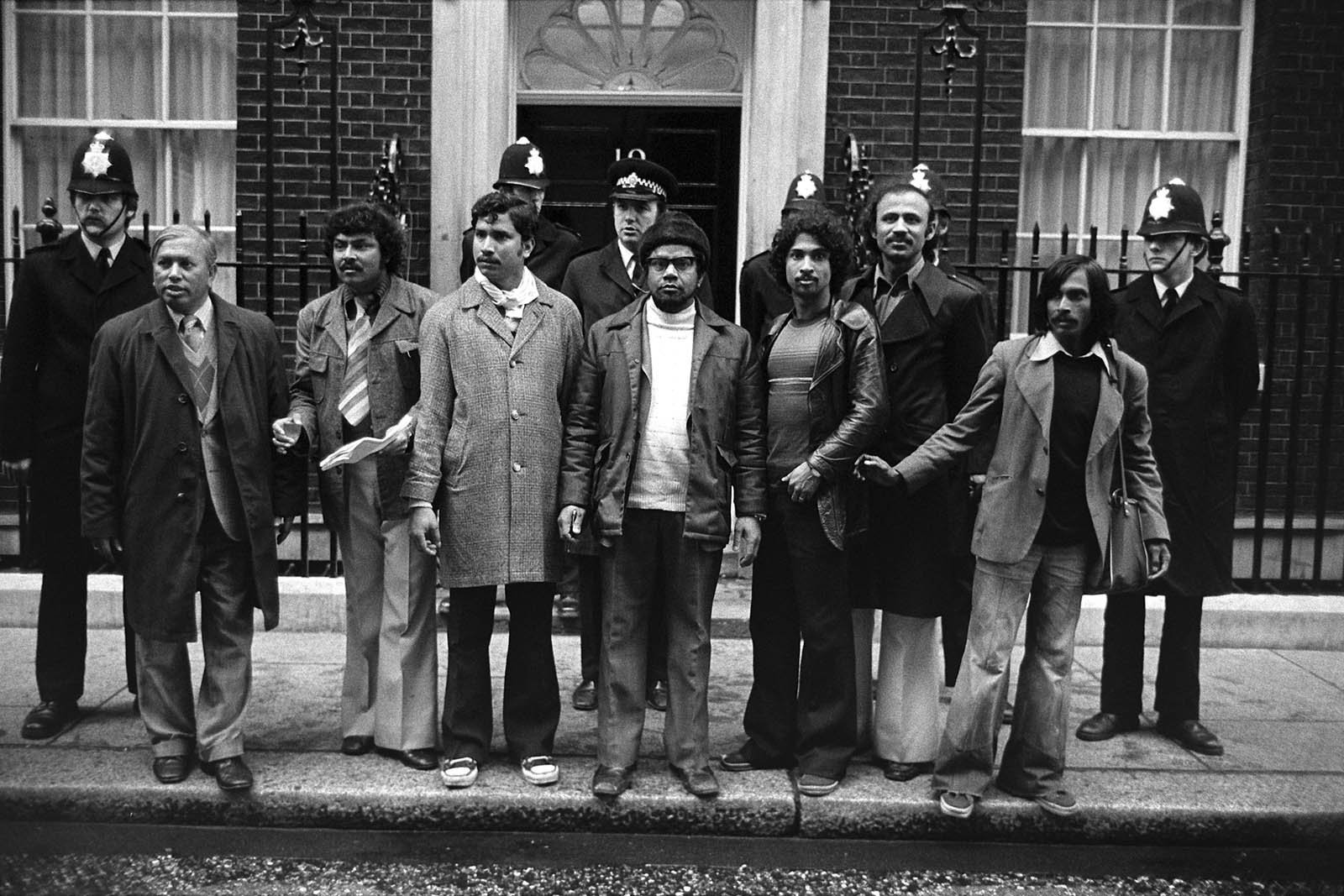
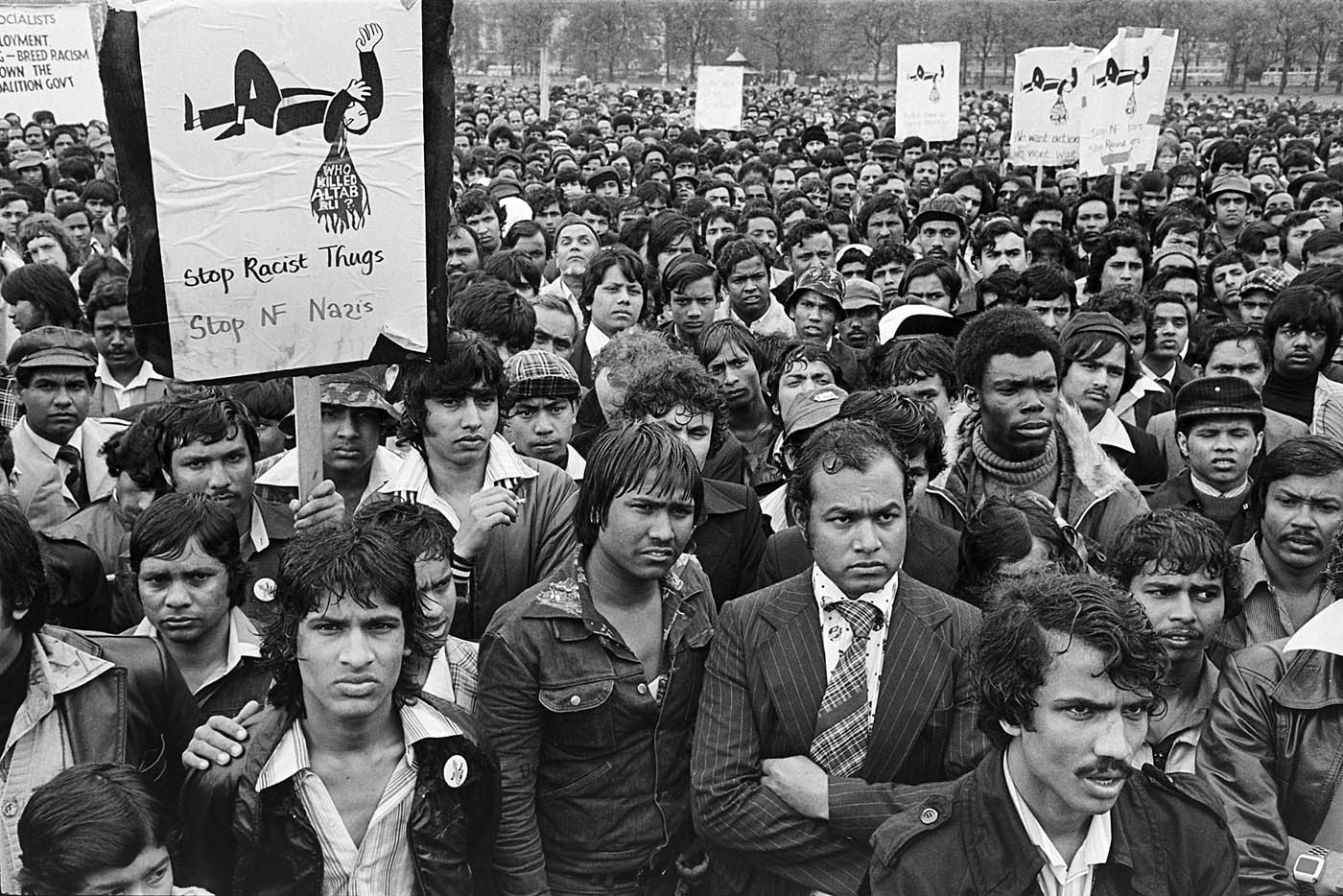

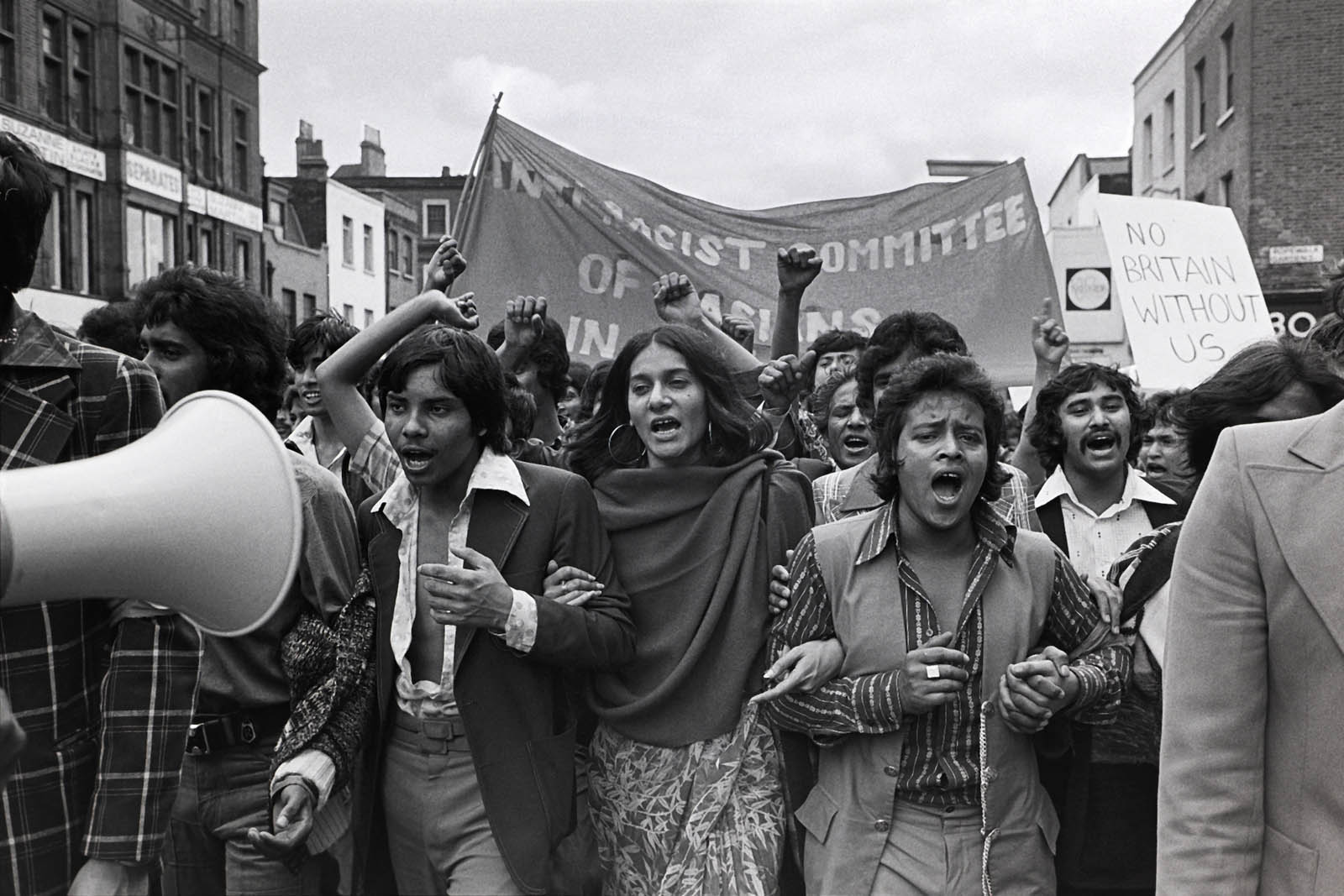

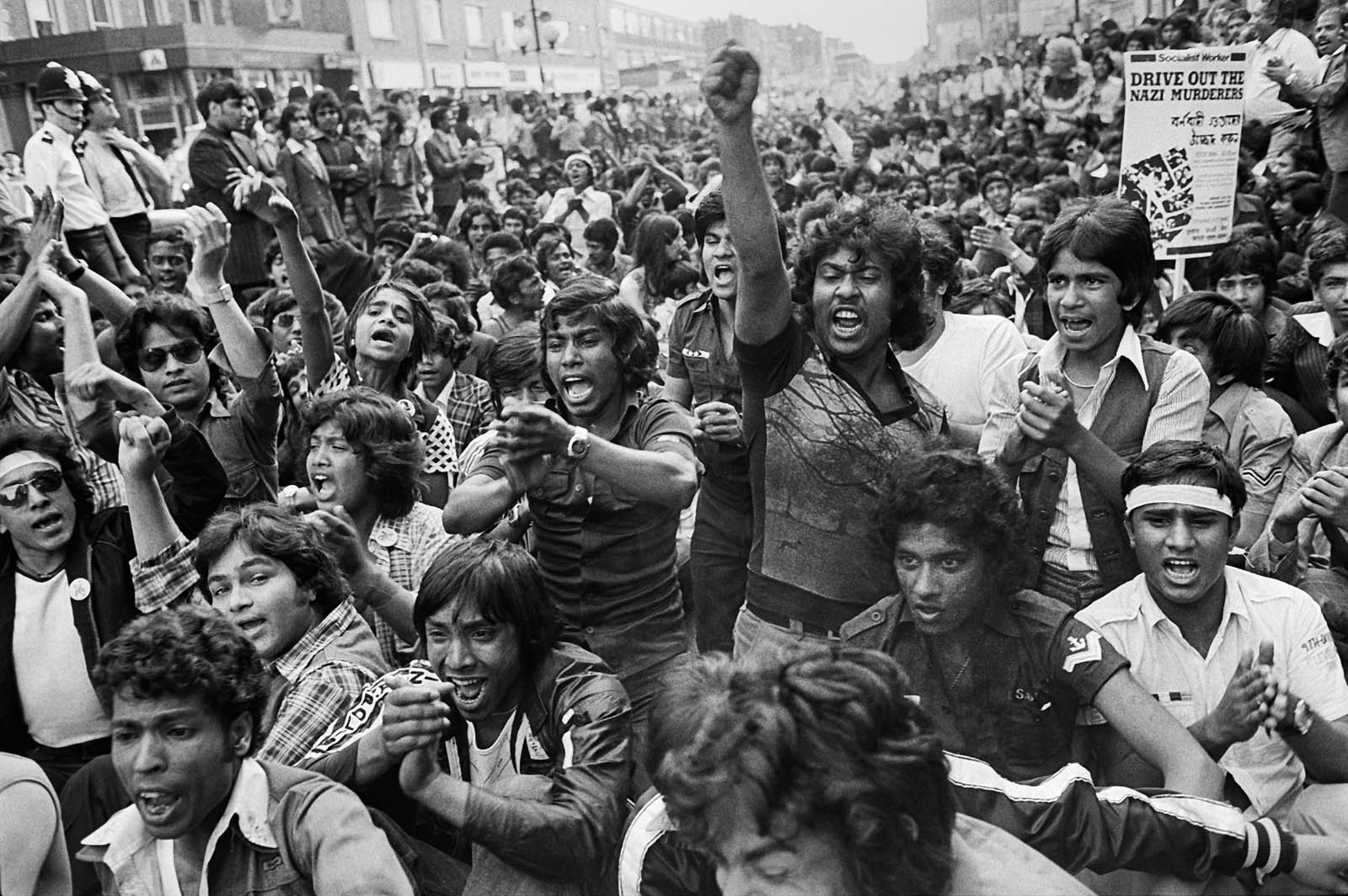
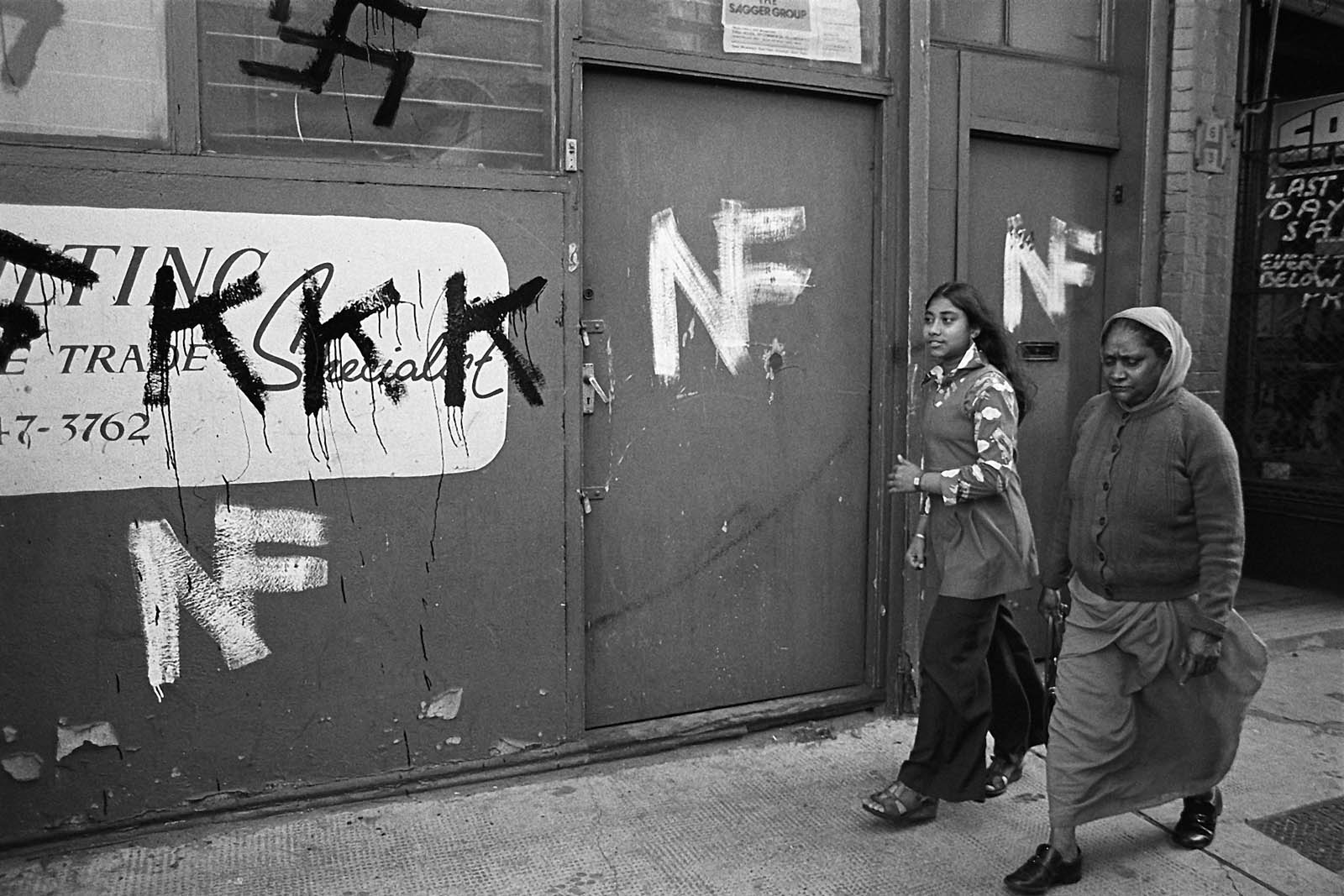

Paul Trevor was born in London in 1947. He grew up on a kibbutz in Israel, studied at the National Film & Television School, and was a founder member of Camerawork, the UK’s first radical photo magazine. In 1973, with fellow photographers Chris Steele-Perkins and Nicholas Battye, he formed the Exit Photography Group… The Exit archive is now housed and administered by the LSE.
You can see more of this history at Four Corners.
Would you like to support Flashbak?
Please consider making a donation to our site. We don't want to rely on ads to bring you the best of visual culture. You can also support us by signing up to our Mailing List. And you can also follow us on Facebook, Instagram and Twitter. For great art and culture delivered to your door, visit our shop.



